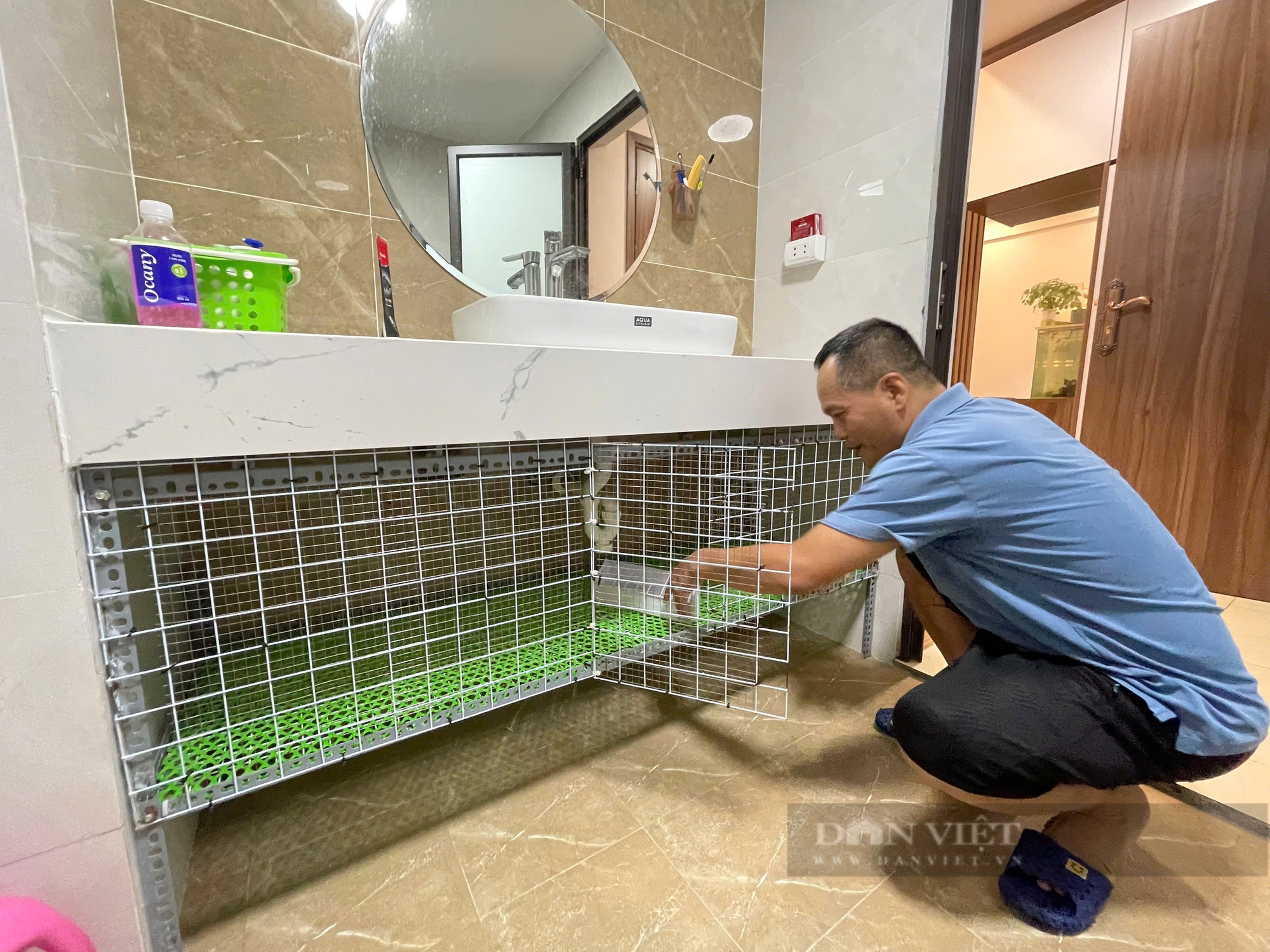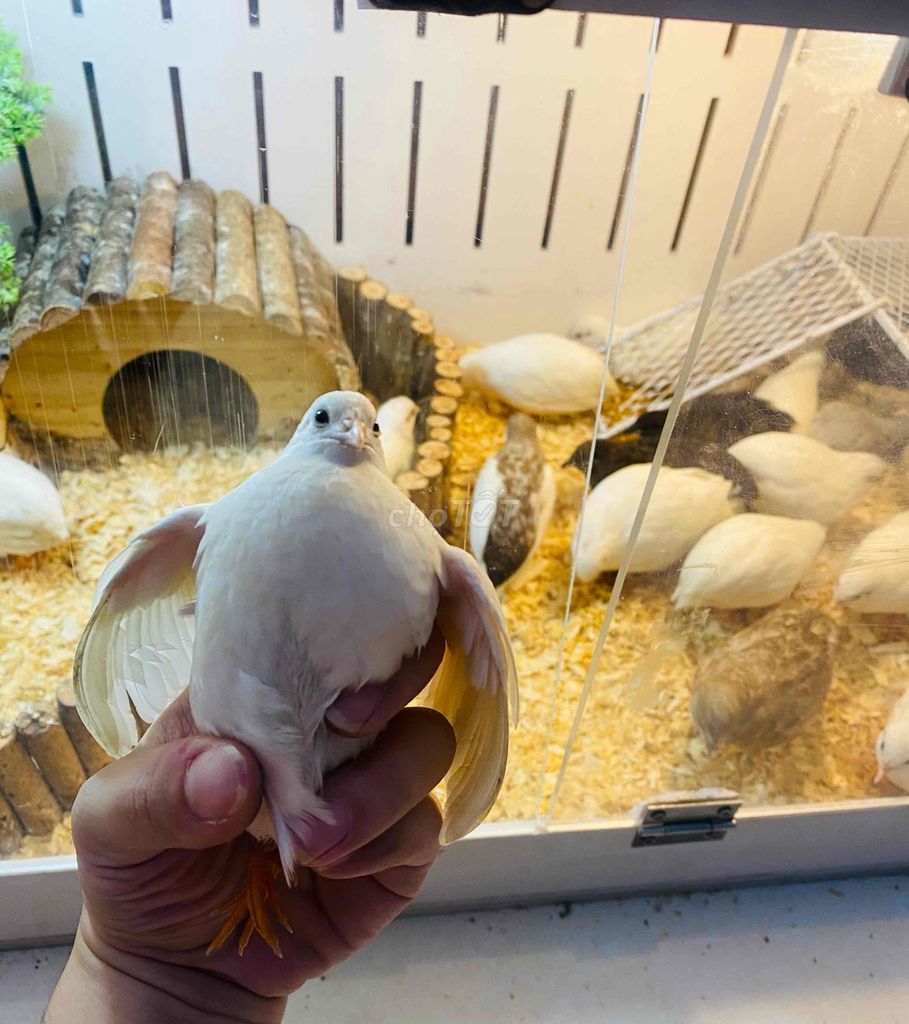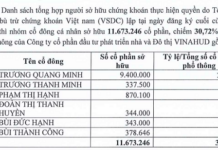Many have shared that taking care of these tiny chickens and collecting eggs daily makes them feel like “real farmers.”
The Rise in Popularity of Rutin Chickens
Fitting in the palm of an adult’s hand and weighing only about 50 grams, Nguyen Chien Thang’s (51, Cau Giay) rutin chickens are crowded around a food tray, pecking away. Looking at these animals, which he considers his “pets,” Mr. Thang shared: “I currently have 22 rutin chickens in a self-designed cage in my living room. After a tiring day of work, I look at them to find joy. They are very cute; when they are small, they are adorable, and when they grow up, they are round and funny-looking.”

Mr. Thang is designing another chicken coop in the bathroom to prepare for more rutin chickens.
A rutin chicken seller shared that this animal originates from Thailand. It is a hybrid between a quail and a gô chicken. The rutin chicken is named after rutin, or vitamin P, a type of flavonoid found in citrus fruits and some other plants and also present in the eggs of this animal.
As he harvested the eggs, which had a light olive brown or pale yellow color, sometimes with sparse black spots, into a plastic basket, Mr. Thang happily exclaimed: “This breed of chicken is easy to raise and lays a lot of eggs! I have five adult hens, and they lay five eggs every day without fail for the past five months. Taking care of them is also very simple: I feed and change their water in the morning before work and collect the eggs in the evening when I get home. I only need to clean the coop once or twice a week, spread straw for bedding, and sprinkle probiotics on top to prevent odors.”
Holding a rooster with a crown pattern on its head, Mr. Thang shared: “The feathers on the rooster’s body will be brighter and fresher than those of the hens. The hens’ feather color is quite similar to that of quails. I’m incubating the eggs for the second time now. In a few days, when the eggs hatch, I will share some with my friends so they can raise them together for fun. Many people have messaged me after watching the video of my chicken coop on social media, asking for a pair of roosters and hens because they find them too cute.”
According to a survey by Dan Viet reporters, typing the keyword “rutin chicken” into the search bar on social media will bring up numerous related groups and pages, with an average membership of tens of thousands of people. Many accounts suggest that raising this breed of chicken is very suitable for “healing” purposes. “You only need to keep a few, because if you have too many, they will make a lot of noise. Adding a few miniature landscapes to the enclosure and watching these chickens grow and lay eggs every day really helps alleviate life’s pressures,” shared a social media user.
According to Mr. Bui Manh Ha (30 years old), a rutin chicken seller in Ha Dong, this breed of chicken is relatively inexpensive, with an average price ranging from 80,000 to 100,000 VND per chicken, depending on its size. “For week-old chicks, the price is only about 30,000 VND each,” Mr. Ha said. “If the owner raises them from a young age, the chickens will be more attached to them.”
Selling Thousands of Chickens Every Month
Quickly catching rutin chickens and placing them in a box for delivery to customers, Mr. Ha, a rutin chicken seller in Ha Dong, shared: “There are months when I sell over 1,000 chickens. The peak season is during the summer when parents want their children to put down their phones, so they buy rutin chickens for them to take care of. During this time, I can easily sell 100-200 chickens a day.”

Rutin chickens are becoming a popular pet choice among Vietnamese youth.
Mr. Ha added that customers usually buy six chickens at a time, including two roosters and four hens. “In fact, the natural ratio of rutin chickens at birth is already around 30% roosters and 70% hens. So, I usually advise customers about this natural ratio and suggest they buy according to it to ensure optimal egg-laying and hatching,” he explained.
When asked about his customer demographic, Mr. Ha replied: “My customers come from various age groups, from students to office workers and housewives who buy chickens for their children to take care of. I have customers from all over the country, from the North to the South.”
However, Mr. Ha usually only accepts orders from Hue to the North. He shared that to ensure timely delivery and maintain the chickens’ quality, he tries to keep the transportation time under 48 hours. For customers in the South who wish to purchase rutin chickens, he recommends reputable farms in the region.
Pointing to the chicken coop decorated with various motifs, such as trees, stones, and wooden fences, Mr. Ha continued: “There are many types of coops. Some people prefer glass coops, while others opt for wooden ones, and those with more financial means may order a custom-designed coop. Many customers have shared with me that they utilize all the empty spaces in their homes to place rutin chicken coops. Even though they don’t live in rural areas, taking care of these chickens makes them feel like ‘real farmers’ in the city.”
Popular among office workers, rutin chickens are the perfect pet to fit busy schedules and tight budgets. For just 1 million VND, one can own a pair of rutin chickens, along with a coop and other decorative accessories. Their primary food is a mixture of grains and chick feed, as their small beaks cannot eat rice or grains like regular chickens.
Once a trending pet in China, rutin chickens are now gaining popularity among Vietnamese youth. Typically, rutin chickens are sold in pairs, with prices ranging from 250,000 to 300,000 VND.





































